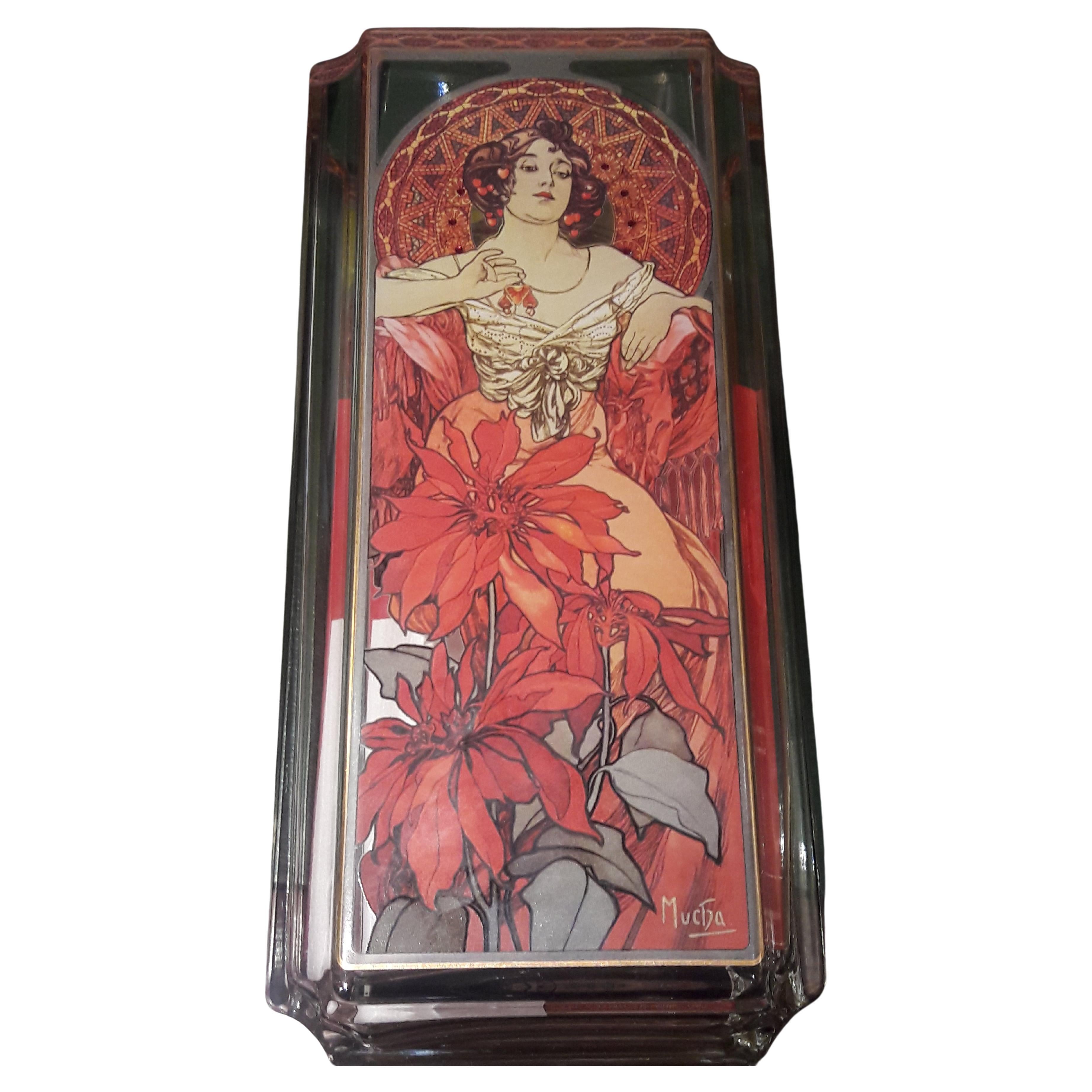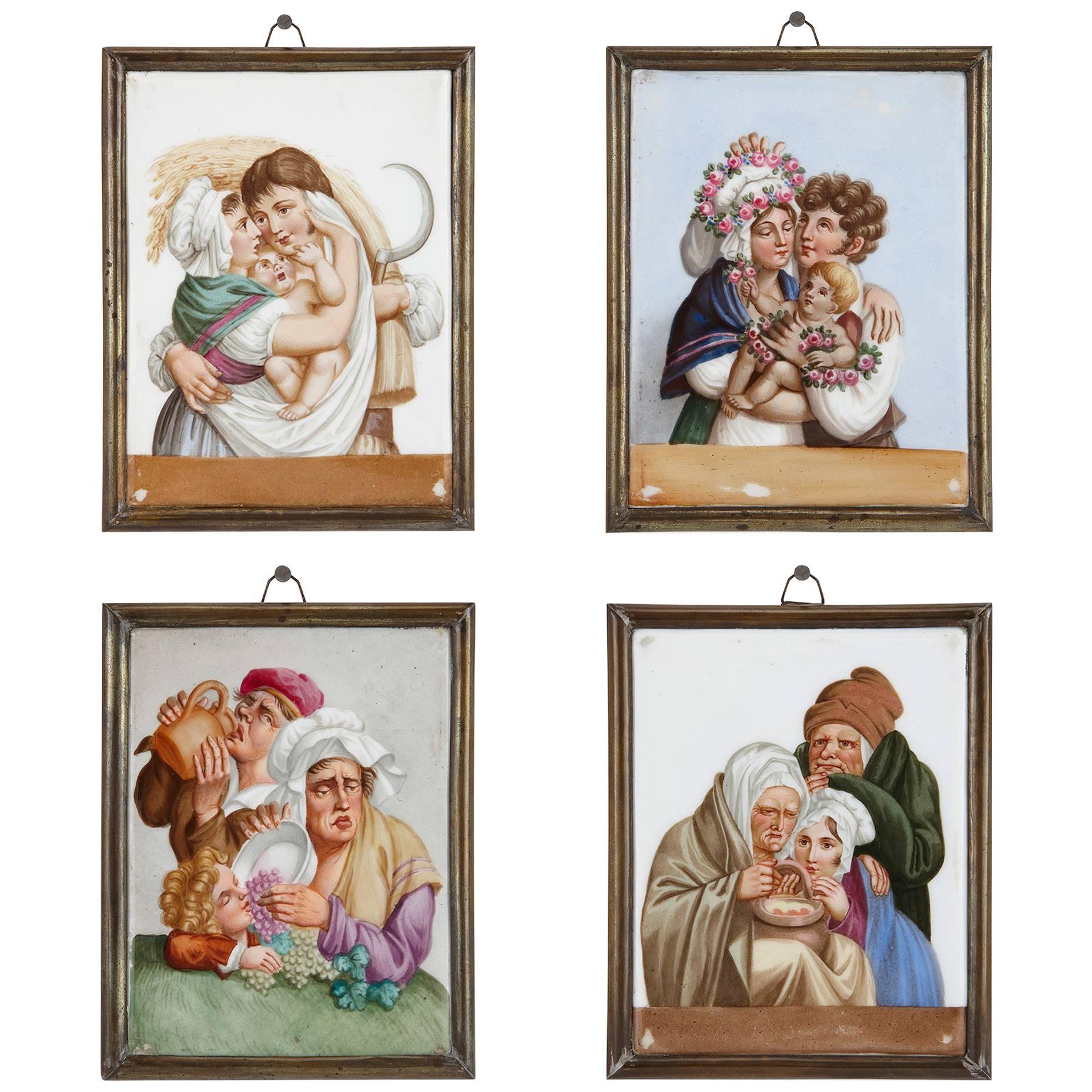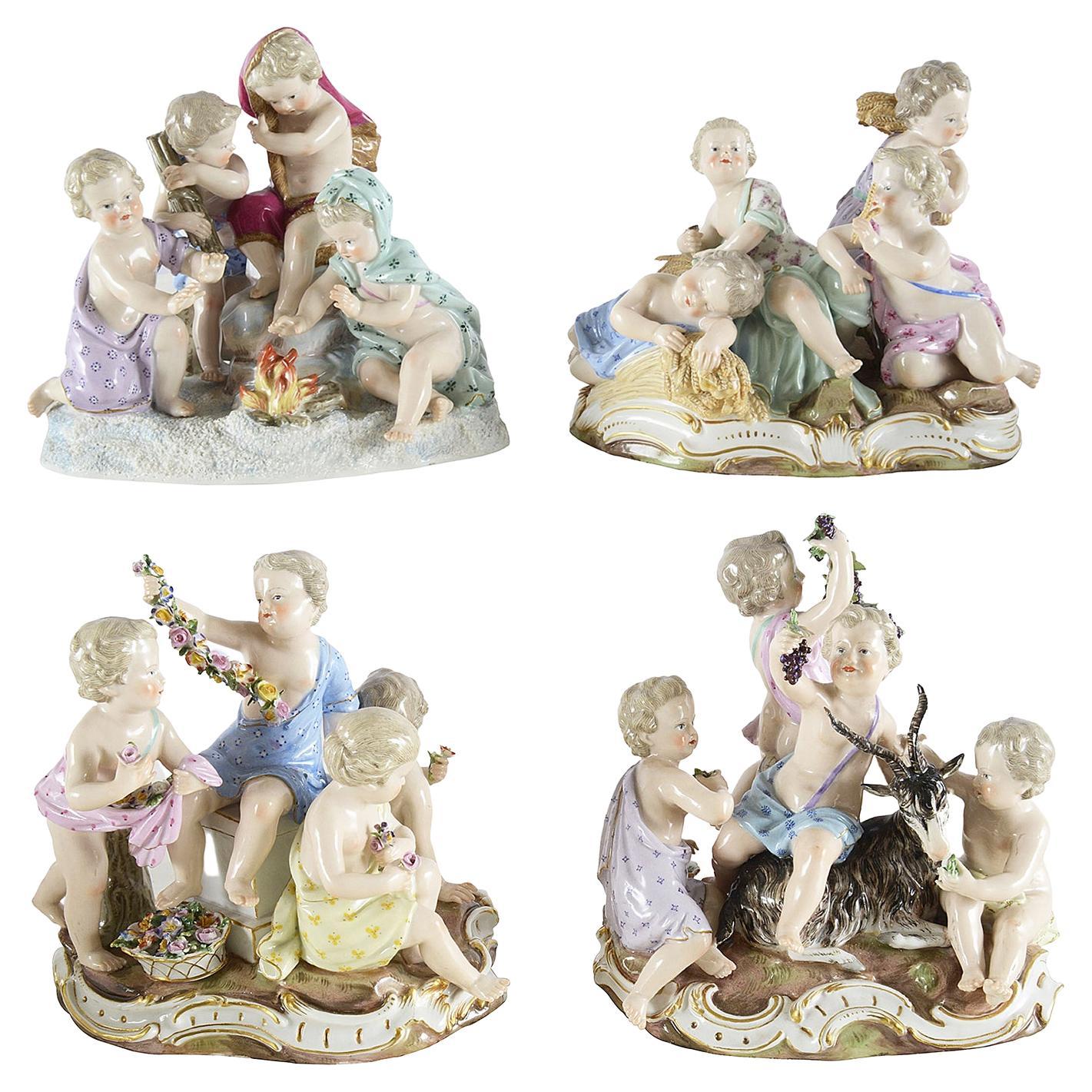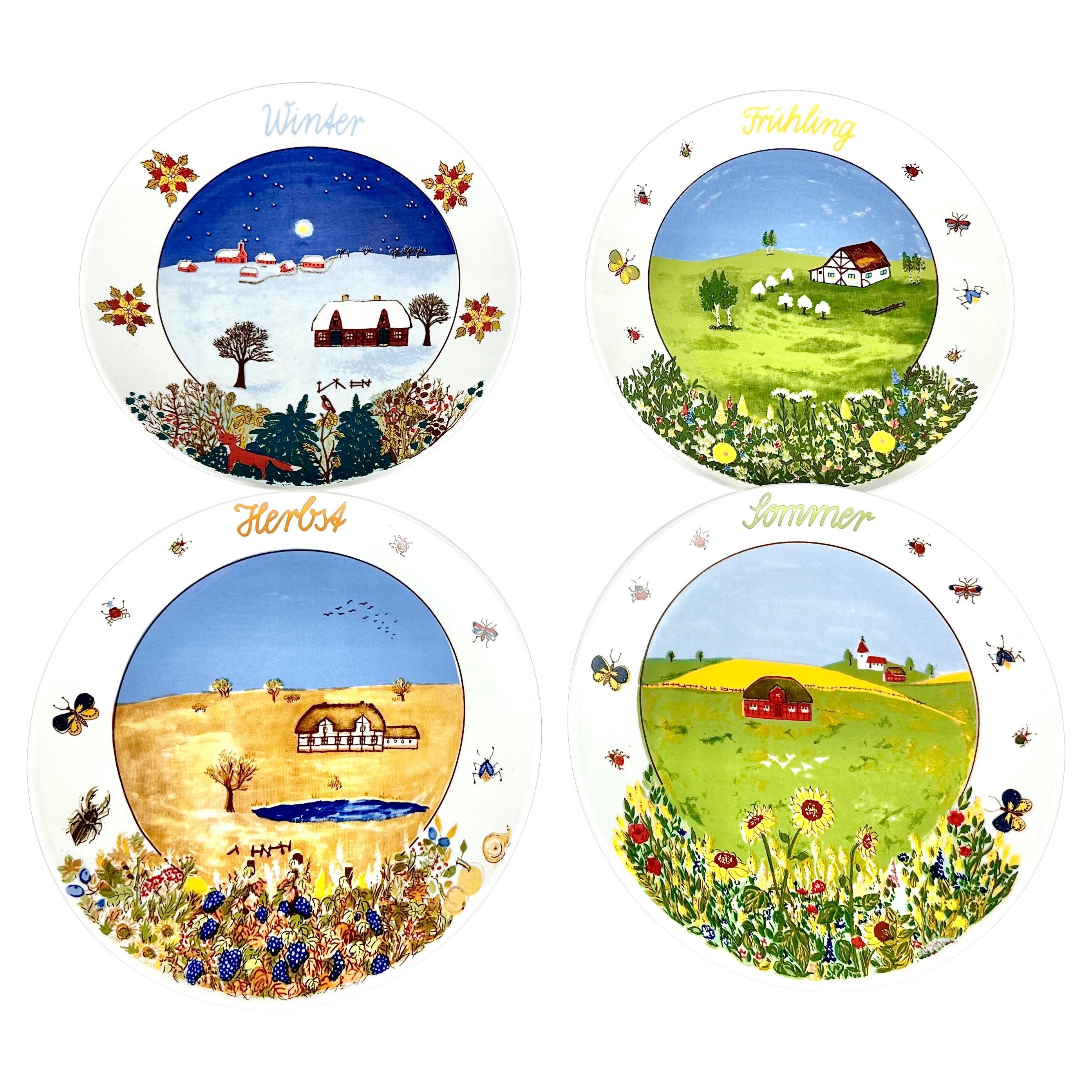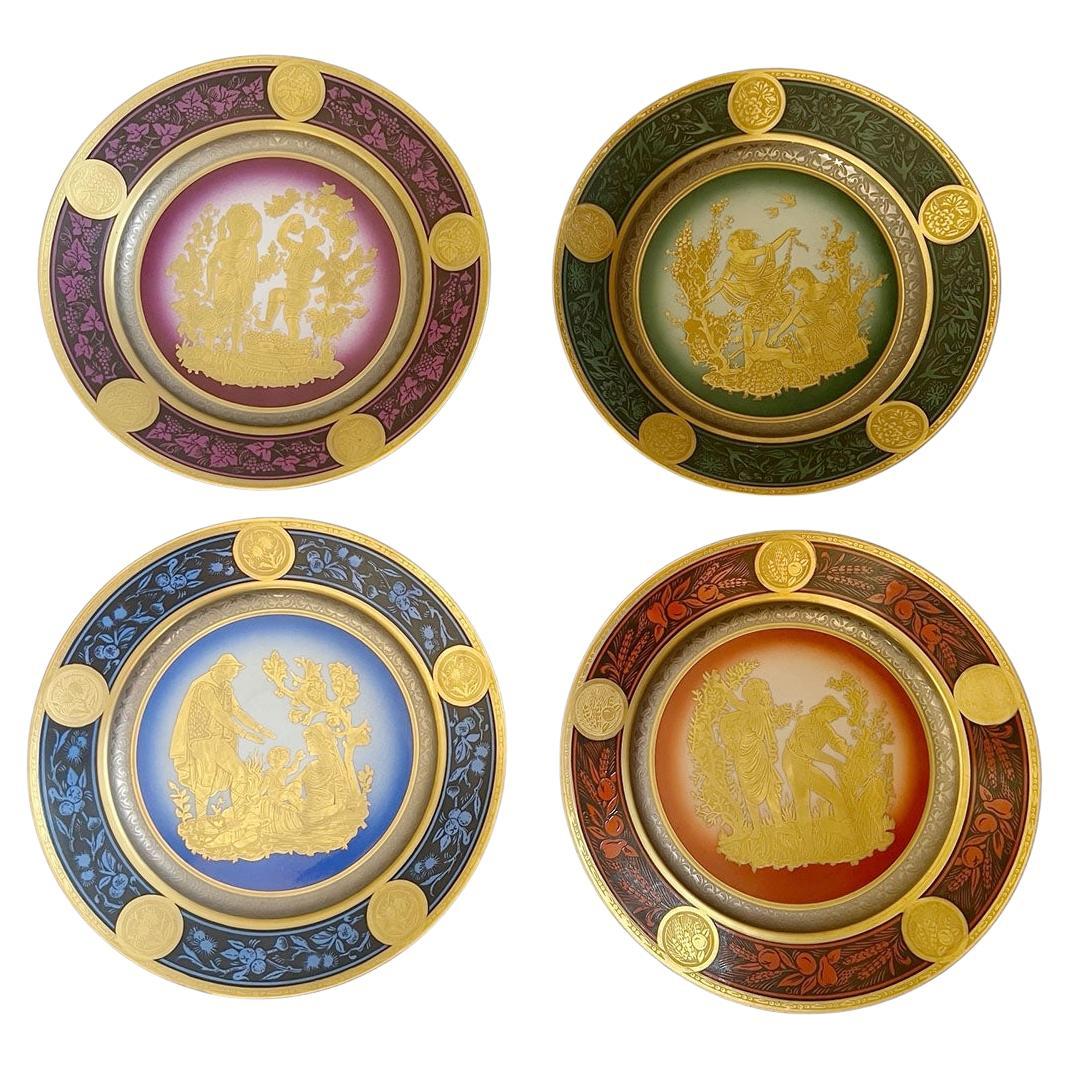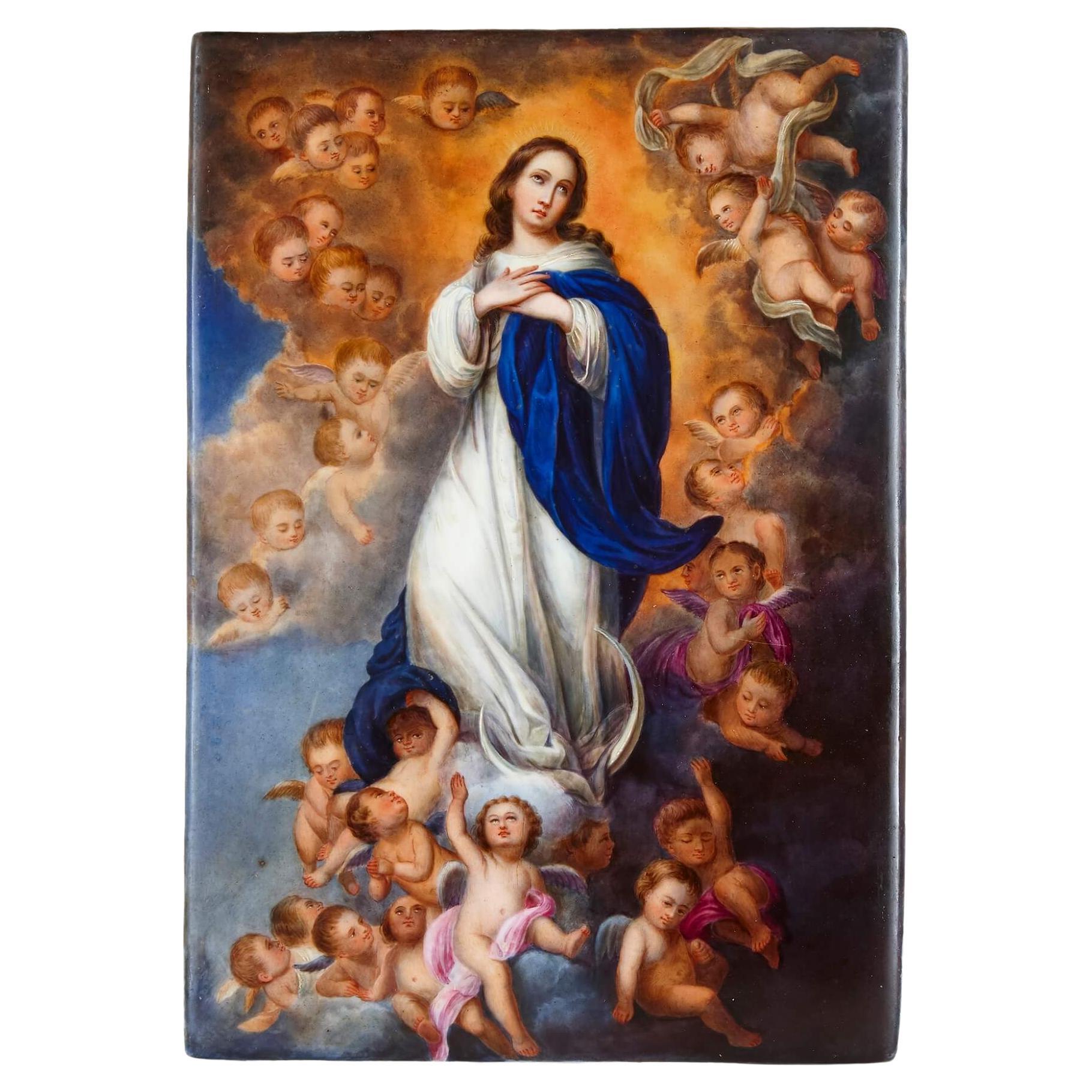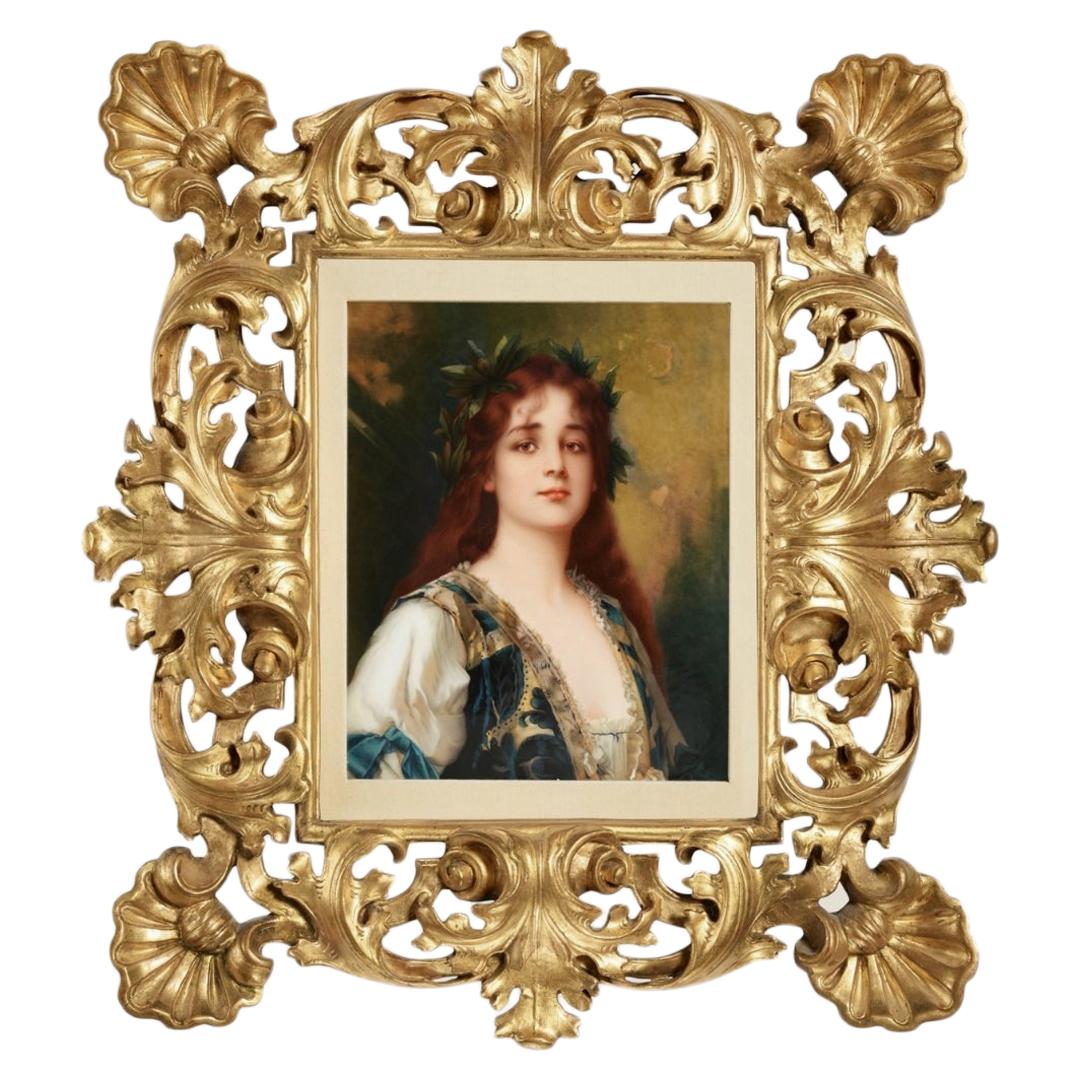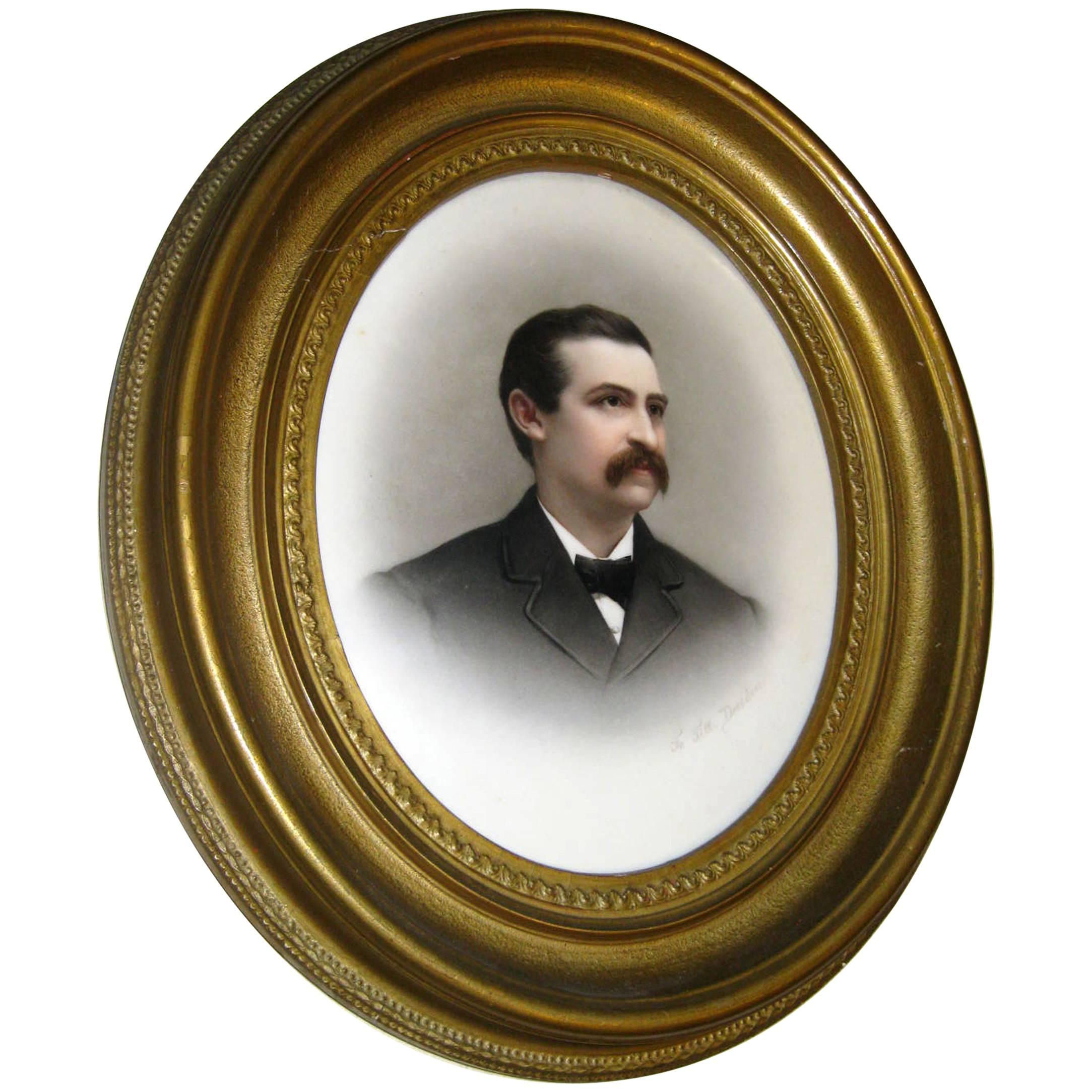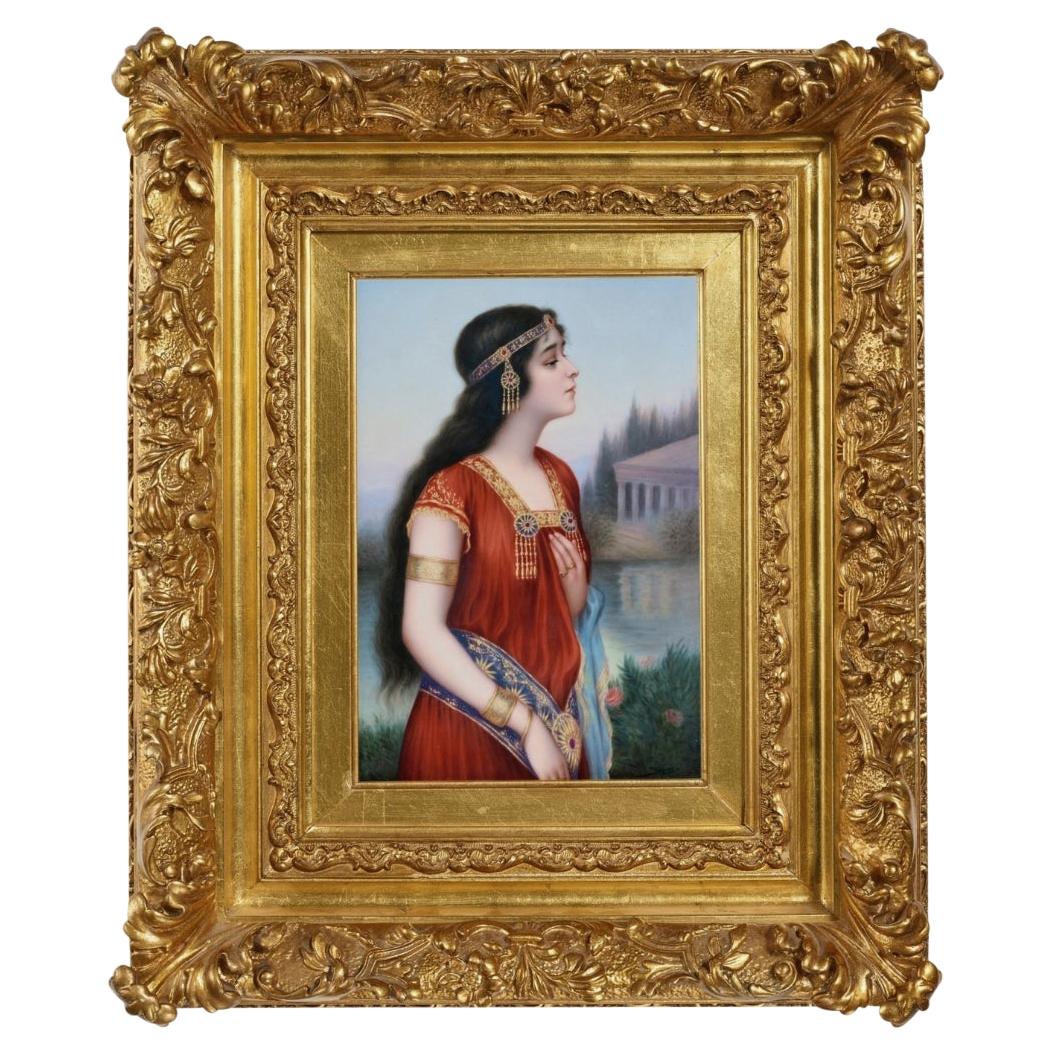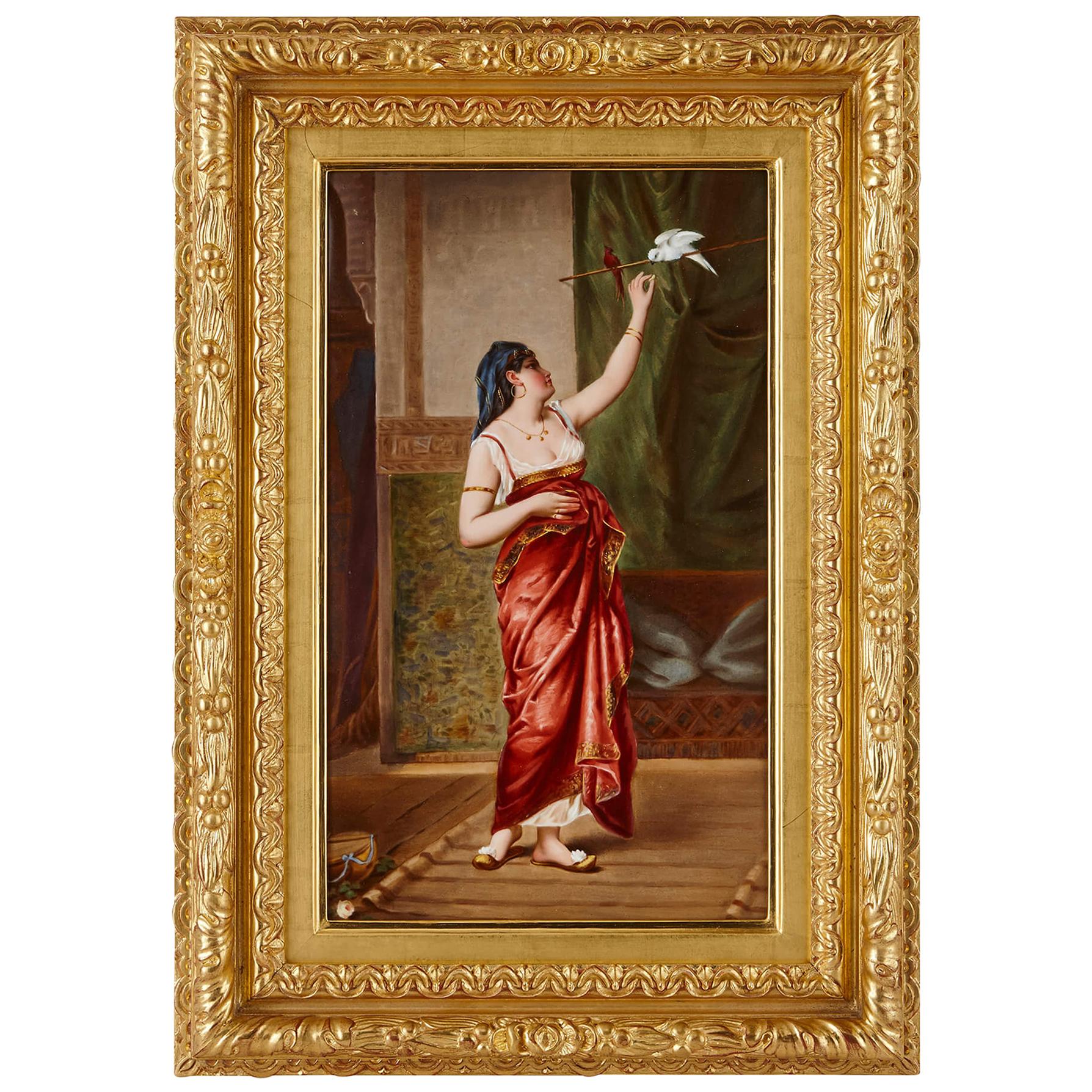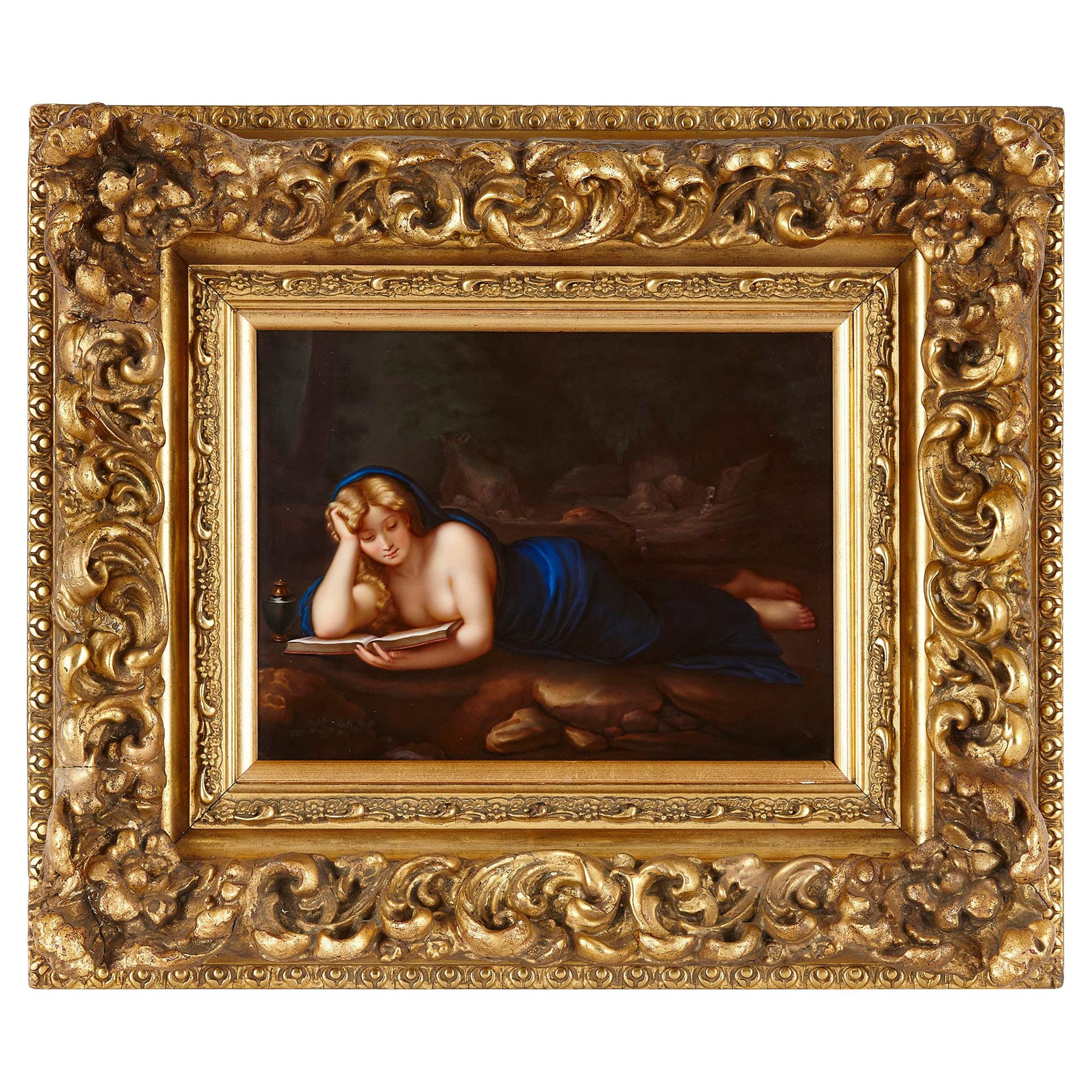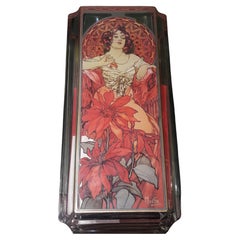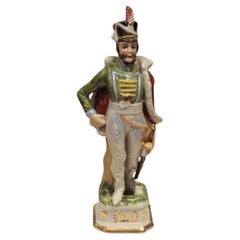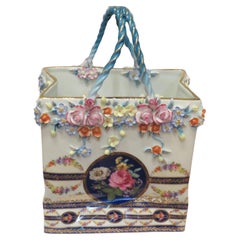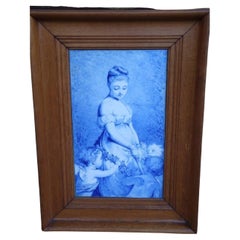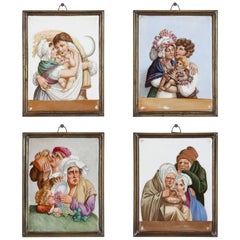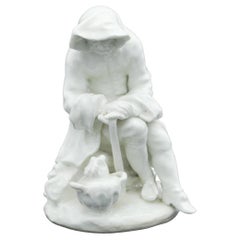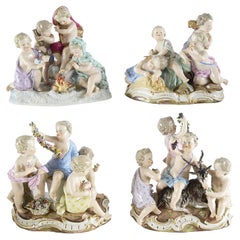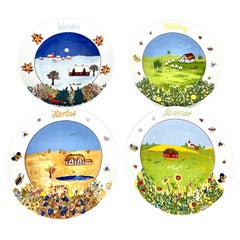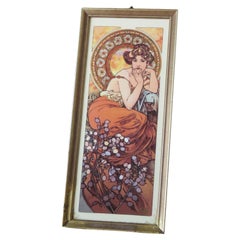
Important Alphonse Mucha Four Seasons Amber Porcelain Plaque w Swarovski Crystal
View Similar Items
Want more images or videos?
Request additional images or videos from the seller
1 of 8
Important Alphonse Mucha Four Seasons Amber Porcelain Plaque w Swarovski Crystal
Price:$450
$525List Price
About the Item
- Creator:Goebel Company (Maker)
- Dimensions:Height: 16 in (40.64 cm)Width: 7.13 in (18.12 cm)Depth: 1 in (2.54 cm)
- Materials and Techniques:
- Place of Origin:
- Period:
- Date of Manufacture:1900s
- Condition:Wear consistent with age and use.
- Seller Location:New York, NY
- Reference Number:1stDibs: LU9623243910212
About the Seller
No Reviews Yet
Vetted Professional Seller
Every seller passes strict standards for authenticity and reliability
1stDibs seller since 2024
27 sales on 1stDibs
Typical response time: 22 hours
Authenticity Guarantee
In the unlikely event there’s an issue with an item’s authenticity, contact us within 1 year for a full refund. DetailsMoney-Back Guarantee
If your item is not as described, is damaged in transit, or does not arrive, contact us within 7 days for a full refund. Details24-Hour Cancellation
You have a 24-hour grace period in which to reconsider your purchase, with no questions asked.Vetted Professional Sellers
Our world-class sellers must adhere to strict standards for service and quality, maintaining the integrity of our listings.Price-Match Guarantee
If you find that a seller listed the same item for a lower price elsewhere, we’ll match it.Trusted Global Delivery
Our best-in-class carrier network provides specialized shipping options worldwide, including custom delivery.More From This Seller
View AllRare Stunning Alphonse Mucha Four Seasons Ruby Glass Vase with Swarovski Crystal
By Goebel Company
Located in New York, NY
The Following Item we are offering is a STUNNING AND MAGNIFICENT Large Alphonse Mucha Four Seasons Ruby Poinsetta Floral Vase with Woman w/ Swarovsk...
Category
20th Century German Glass
Materials
Glass, Paint
$375 Sale Price
50% Off
Free Shipping
Important Estate Gorgeous Sevres Style Dresden Style Porcelain Napoleon
Located in New York, NY
The Following Item we are offering is this Large Estate Signed Dresden Style RARE LARGE FRENCH NAPOLEON DRESDEN STYLE STANDING PORCELAIN FIGURE. Beautifully Handpainted with Fine Det...
Category
20th Century Unknown Porcelain
Materials
Porcelain
$1,250 Sale Price
50% Off
Free Shipping
Rare Important Gorgeous Sevres Style / Dresden Style Porcelain Shopping Bag
Located in New York, NY
The following Item we are offering is a Spectacular Handpainted Sevres Style / Dresden Style Porcelain Shopping Bag/ Basket with Intricate Colorful Floral Motifs outside and inside o...
Category
20th Century Unknown Porcelain
Materials
Porcelain
$1,000 Sale Price
60% Off
Free Shipping
Beautiful Framed 19TH C Painting on Porcelain Woman Children Charles Chaplin
Located in New York, NY
The Following Item we are offering is a Beautiful Museum Quality Painting on Porcelain of a Woman surrounded by Cherubs holding Garland. Magnificently done with Outstanding Detail. Framed in a Beautiful Wooden Frame, inscribed Ch. Chaplin. Taken out of the Penthouse Estate of the President of Prestige Jewelers Upper East Side, New York City.
Framed Measurements: 24" H x 33" W
Charles Joshua Chaplin (8 June 1825 – 30 January 1891) was a French painter and printmaker who painted both landscapes and portraits. He was an accomplished artist mastering different techniques such as pastels, lithography, watercolor, chalk, oil painting and etching. He was best known for his elegant portraits of young women.
Charles Joshua Chaplin was born on 8 June 1825 in Les Andelys, Eure, France. His mother, Olympia Adelle Moisy, was French, whereas his father, John Chaplin, was an art broker from England. Charles Chaplin spent his whole life in France, becoming a naturalized citizen in 1886.[1][2] He studied at the École des Beaux-Arts in Paris from 1840, and he took private lessons in the studio of Michel Martin Drolling, whose apprentices included Paul Baudry, Jules Breton and Jean-Jacques Henner. Later he also taught at the École des Beaux-Arts.[2]
In 1845 he entered the Salon de Paris, the official art exhibition of the Académie des Beaux-Arts, as a portrait and landscape painter with the painting Portrait of the Artist's Mother. Chaplin conducted art classes specifically for women at his studio. The American artist Mary Cassatt, the French artist Louise Abbéma and the English artist Louise Jopling were among Chaplin's students. His son Arthur Chaplin was also a painter. Chaplin died on 30 January 1891 in Paris as a wealthy man and is buried in the Père Lachaise Cemetery.[3][4]
Chaplin made his debut at the Salon with portraits, but he also painted landscapes, particularly the countryside of Auvergne. His early works, from 1848 to 1851, were painted in a more realistic style, and are characterized by an interest in realism, which was a style that had been reestablished in France by the French Second Republic, that had the motto Liberté, égalité, fraternité, and was ruled for three years by the republican government of France from the 1848 Revolution until the 1851 coup by Louis-Napoléon Bonaparte. Realism was an artistic movement that began in France in the 1850s, after the 1848 Revolution.[5] From the late 18th century Romanticism dominated French art and literature but was spurned by Realists, who revolted against the display of the emotions of the Romantic movement, seeking to depict real and characteristic contemporary individuals and situations with truth and accuracy.[6]
Chaplin painted many works in his early days, including floral studies that were displayed at the Salon de las Flores. Later, in the late 1850s, he abandoned naturalism, his earlier style, exchanging it for a more graceful, elegant and supple technique that brought him a certain notoriety in France during his time as a portrait painter; as such he embraced the idyllic and voluptuous and fashionable style of the prominent French painter, François Boucher (1703–1770).[7]
He also embraced the tradition of the great English portraitists. He developed his very own style of painting but was inspired by the British painters Joshua Reynolds and Thomas Gainsborough. He used to engrave the works of the Dutch artist Pieter Paul Rubens and gained further influence from his work.[2]
Later work
Gradually the muddy colours used by Chaplin transformed into white, grey and pink, depicting his models with an opalescent, mother-of-pearl complexion by applying a subtle palette of rosy flesh tones and light greys. After painting portraits and trying his skills on ornamental painting, Chaplin took up genre painting in the 1850s. His favourite subjects are the feminine grace of a young woman’s everyday life. He portrays women in several poses: resting; grooming; singing; and reading. He captures them with lightness and carelessness and accentuates the decorative elements of the composition.[2]
Empress Eugénie, the wife of Napoleon III and an admirer of the "Pompadour style", rapidly fell under the enchantment of the painter's neo-Rococo works. Chaplin was among Napoleon III and Empress Eugénie’s favourite court artists. In 1859, when his portrait of Aurora was banned by the judges of the Salon as "too erotically suggestive", Napoléon III defended Chaplin and overturned the disqualification order.[8] He was similarly valued as an interior decorator and was appointed to remodel the decor of Empress Eugénie's rooms.[8]
His sensual portraits of women and young girls, often with models posed erotically in hazy surroundings and frequently wearing transparent clothing, attracted the interest of the high society and aristocracy of Paris during the French Third Republic (1870–1940) guaranteeing his success and wealth. He was one of the most popular painters of his time, but nowadays his work is almost unknown, in spite of the fact that his works hang in many major museums around the world.[2]
He employed his Rococo style for his mythological scenes and genre scenes paintings. His genre pictures formed a significant part of his work. In 1861, working as a decorative painter. Chaplin painted the doors and several glass panels above them of the Salon des Fleurs in the Tuileries Palace.[3] The Palace was gutted by fire in 1871 and its ruins swiftly demolished.[9] He also undertook decorating work in the Salon de l’Hémicycle of the Palais de l’Elysée.[3]
Honours and awards
A Song Silenced, Private collection.
As a member of the Académie royale de peinture et de sculpture, Chaplin exhibited his paintings at the Salon de Paris, the official exhibition venue of members' work. He began exhibiting his paintings at the French Artists' Salon in 1845 and was represented there habitually each year. These exhibitions made him one of France's most famous portrait artists. Commencing in 1847, his work was exhibited regularly at the Royal Academy in London.[8]
During his lifetime he received acclamation for his artistic talents by the award of several medals: a third class medal in 1851; a second class medal the following year; and an Honour Medal...
Category
20th Century Unknown Porcelain
Materials
Porcelain
$4,320 Sale Price
76% Off
Free Shipping
Beautiful 19th Century Painted NeoClassical Porcelain Bottle 1861 Prez Saxe
By Lalique
Located in New York, NY
The Following Item we are offering is This beautiful antique bottle features a lovely Neoclassical Scene. The vase is painted a Turquoise Green and porcelain has relief details which...
Category
Antique 19th Century German Porcelain
Materials
Porcelain
Rare Important French Amber Colored Glass Perfume Bottle with Austrian Crystals
Located in New York, NY
The Following Item we are offering is a Rare French Vintage Perfume Bottle. Bottle contains Beautiful Scrolled Bronzework detail. Handpainted with Beautiful Colors and contain Gorgeo...
Category
20th Century Asian Bottles
Materials
Crystal
$300 Sale Price
40% Off
Free Shipping
You May Also Like
Four Meissen Porcelain Plaques Depicting the Four Seasons
By Meissen Porcelain
Located in London, GB
This delicately detailed set of four allegorical porcelain plaques portrays family scenes within the theme of the four seasons: Spring, Summer, Autumn and Winter.
Spring can be ide...
Category
Antique Early 19th Century German Folk Art Paintings
Materials
Metal
Winter, from the Four Seasons, Bow Porcelain Factory, circa 1750
By Bow Porcelain
Located in Melbourne, Victoria
A personification of Winter, from The Four Seasons.
Unusually fine condition for a figure of this period.
Category
Antique Mid-18th Century English Neoclassical Porcelain
Materials
Porcelain
Meissen Set of the Four Seasons Porcelain Figures, 19th Century
By Meissen Porcelain
Located in Brighton, Sussex
An enchanting set of four, late 19th century Meissen porcelain groups, depicting the four seasons, each with putti playing around a logs fire, a bail of hay, picking grapes and garla...
Category
Antique Late 19th Century German Classical Roman Porcelain
Materials
Porcelain
Amazing Set of 4 Porcelain Wall Plates Four Seasons from Kahla GDR 1970
Located in Bastogne, BE
This is a rare and very beautiful set of 4 wall hanging plates/ panels by Kahla.
Manufactured in GDR, in 1970. Vintage collector's plates.
On the plates illustrates a different se...
Category
Vintage 1970s German Porcelain
Materials
Porcelain
Italian Four Seasons Plates by Longo Set of Four
Located in Dallas, TX
This stunning set of four Italian plates by Longon beautifully represents the Four Seasons, each in a unique, vibrant color. Hand painted, Dipinto A Mano and adorned with Oro Zecchin...
Category
Vintage 1930s Italian Porcelain
Materials
Porcelain
Antique porcelain plaque after Murillo
By Bartolomé Esteban Murillo
Located in London, GB
Antique porcelain plaque after Murillo
Continental, 19th Century
Height 28cm, width 19.5cm, depth 1cm
This finely painted antique porcelain plaque depic...
Category
Antique 19th Century European Baroque Paintings
Materials
Porcelain
Recently Viewed
View AllMore Ways To Browse
Vintage Goebel Porcelain
Alphonse Mucha Seasons
Mucha Four Seasons
Goebel Crystal
Meissen 1710
Meissen Art Nouveau
Rosenthal Roses
Spode Service
24k Gold Plated Porcelain
Antique Limoges China
Blue And White Sugar Bowl
Coalport China
Coalport Chinese Porcelain
Court Sword
Davis Furniture Co
Espresso Coffee Cups And Saucers
Ginori Doccia
Italian Espresso Cups
